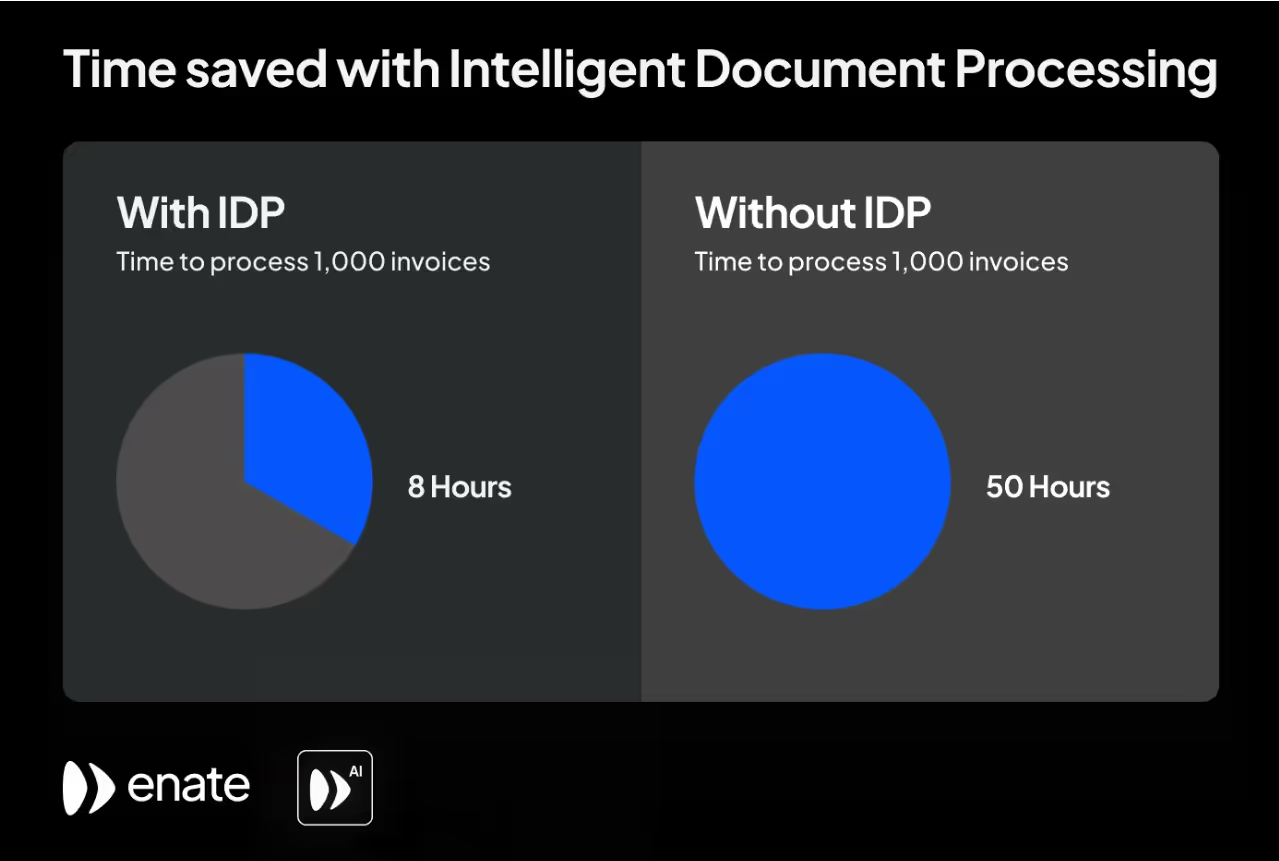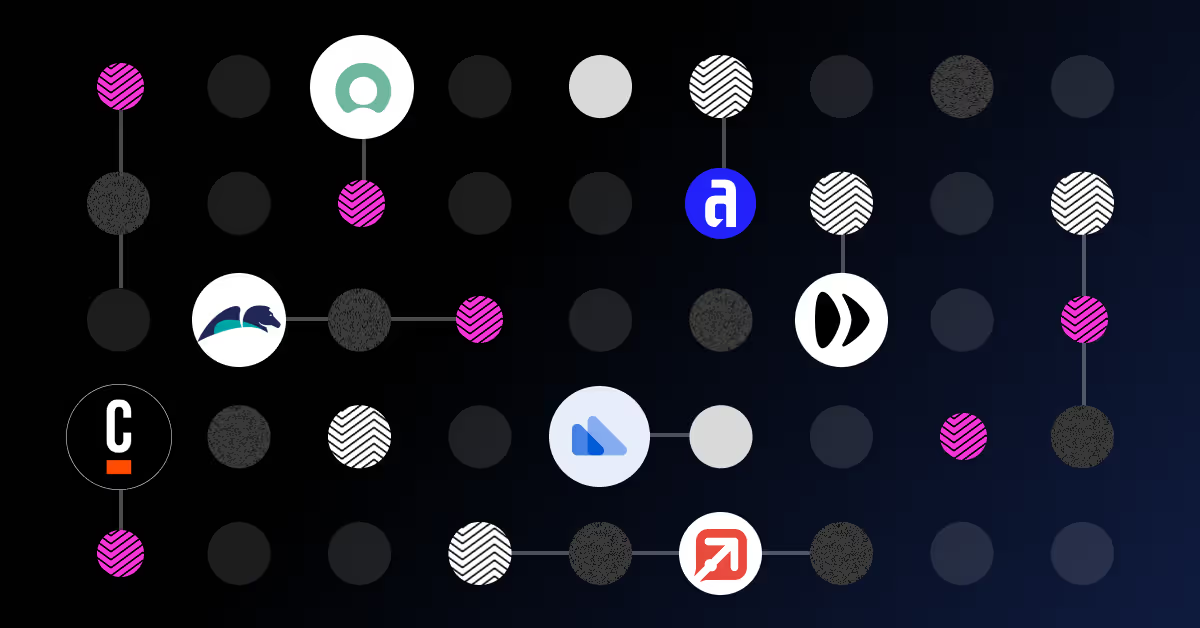5 ways to improve invoice processing workflows (2025)

It's 2025, nobody wants to manually comb through invoices anymore. It's a repetitive and dull FinOps process that's prone to mistakes and inefficiencies. But there's good news, reader. Did you know that Intelligent Document Processing can dramatically reduce the time spent on this dull yet essential task? For example, processing 1,000 invoices manually at 3 minutes a pop takes around 50 hours. With IDP, that drops to just 30 seconds per invoice, reducing the total time to 8 hours and saving a not too shabby 42 hours every month.

Let's look at the typical invoice process. It typically follows the following manual sequence of steps...
- Invoice received
- Invoice scanned (if applicable)
- Data captured
- Data validated
- Approval workflow
- Payment authorised
- Payment sent
- Record keeping and archiving
- Payment reconciliation

Often handled manually, prone to errors, and frequently subject to delays, invoice processing can be vastly improved with orchestration and automation. We’re going to explore the main challenges inherent in invoice processing and five key ways in which it can be improved. We’re going to explore the main challenges inherent in invoice processing and five key ways in which it can be improved.
The major challenges faced in traditional invoice processing
These are the 5 main culprits that can cause slow and inefficient invoice procedures.
1. Manual data entry
Without workflow management in place, many companies are still processing invoices manually and that makes it a resource-intensive task. The information from paper invoices is input into the accounting system which takes time and can even risk some invoices being lost under other piles of paperwork or details being input incorrectly. Digitizing the procedure with workflow management addresses all these issues.
2. Delays and inefficiencies
Companies that still rely on paper-based invoices often have lengthy processing times. Invoices take a long time to make their way to the right person and then the procedure is disjointed and slow, often getting held up at multiple stages. An invoice often passes through various hands or systems before payment is finally made. This can lead to late payments, which can place a strain on supplier relationships. Workflow management orchestrates the entire process from beginning to end, making it quicker and allowing any delays to be swiftly dealt with.
3. Human errors
People make mistakes. When invoices are being handled manually they are susceptible to human error and that can have financial repercussions. Incorrect invoice data can lead to accidental overpayments, compliance issues, or missed payments. Automating invoice processing with a workflow management solution minimizes these errors and notifies the right people quickly in the event of potential issues.
4. Lack of visibility
The usual methods make it difficult to track the status of invoices as they go through all the processing steps. So when invoices get delayed, say because they’re waiting for approval, it may take a while to realize that there’s a problem. Bottlenecks and confusion are rife and improving the process is an uphill struggle. Workflow management provides X-ray vision into the process, so invoices are easy to track and any issues can be handled in a timely manner.
5. High processing costs
When it takes so long to process invoices and the risk for mistakes is so high, the natural consequence is a financial drain on the company’s resources. The amount of time employees spend on invoicing prevents them from focusing on their core duties, which represents a poor use of resources. By automating invoice processing with HR workflow management businesses can save both time and money.

5 ways to vastly improve your invoice processing workflows
If you’re ready to transform your invoice procedures, read on.
1. Implement electronic invoicing
Electronic invoicing is the first step towards modernizing your invoice processing workflow. E-invoicing automates the delivery and receipt of invoices into a standardized digital format. This reduces the need for manual entry, speeds up processing times and greatly improves accuracy.
2. Utilize optical character recognition (OCR)
Adopting OCR technology can optimize your invoice procedures even further. This software automatically extracts the data from scanned or digital invoices so it no longer needs to be input manually. Once again, this expedites processing time and significantly reduces mistakes.
3. Implement workflow orchestration
Workflow orchestration effectively streamlines the entire invoice processing journey from start to finish. Routine and repetitive steps can be fully automated, invoices are routed to the right people for approval, and reminders are automatically sent when an invoice is overdue. Plus, built-in reporting facilitates clearer visibility into the process. Everything runs more smoothly and the error count drops drastically.
4. Leverage artificial intelligence (AI)
There is an influx of AI-powered solutions arriving to address an array of needs and that includes invoice processing. Tools like Enate’s built-in AI solution can perform advanced data validation and anomaly detection. So when invoices deviate from the norm, a human worker is immediately notified to review it further. This helps ensure fraudulent invoices are caught and compliance issues are avoided.
5. Integrate with accounting software
To truly streamline invoice procedures it’s essential to ensure your legacy systems and invoice workflow software are all synchronized and working together seamlessly. Adopting a workflow solution that wraps around the current tech stack is the easiest way to achieve this. With everything fully integrated, financial data is recorded accurately, nothing gets missed, and improved financial reporting supports better decision-making.

Upgrade your invoice processing today
Enate’s end-to-end workflow orchestration solution orchestrates invoice processing from start to finish. Fragmented procedures are brought together in one system for optimum efficiency, minimized mistakes, and crystal-clear visibility into operations. Discover how orchestration and Intelligent Document Processing can help you save time in invoice processing today.



